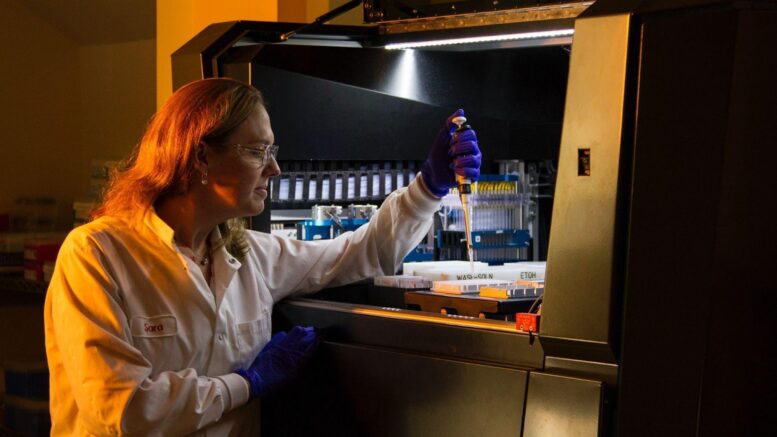A Lab Information System (LIS) is a vital component of any laboratory. It allows labs to digitize and streamline their operations, from patient registration and specimen collection, to test ordering and results reporting.
LIS is a software solution that is designed to manage, store and analyze data generated in laboratory settings. It is not only limited to clinical labs but is also used in research and industrial laboratories. With an LIS, lab staff can easily enter, store and retrieve data, generate reports and manage workflow, improving the lab’s overall productivity and efficiency.
In this guide, we will take a deep dive into the functions and benefits of an LIS and how it differs from a Laboratory Information Management System (LIMS). We will also explore one of the market’s most widely used LIS software solutions, NovoPath LIS, and why it is an ideal solution for automating and streamlining laboratory operations.
What is a Lab Information System?
Put simply, a Lab Information System (LIS) is a software solution used to manage and organize the vast amounts of data generated in a laboratory setting. An LIS’s main goal is to improve a laboratory’s overall efficiency and productivity by streamlining data management and reporting.
One such widely used and reputable LIS software solution is NovoPath LIS. It is a fully integrated laboratory information system that can manage all aspects of a laboratory’s operations and is designed to automate and streamline laboratory processes, from patient registration and specimen collection to test ordering and results reporting. NovoPath LIS also includes features such as electronic ordering and tracking of specimens, barcode scanning for specimen tracking and inventory management, and an extensive reporting system.
An LIS like NovoPath is ideal for those looking to automate and streamline their laboratory’s operations. It is particularly useful for large or multi-site laboratories, where staff may be located in different buildings or even different countries. It can be used in clinical, research, and industrial laboratories and customized to meet each lab’s specific needs. Its ability to improve laboratory workflow, productivity, and regulatory compliance makes it a highly sought-after LIS software solution.
How LIS Differs from LIMS
A Laboratory Information Management System (LIMS) is a software solution used to manage laboratory samples. It allows for the tracking, storage, and retrieval of samples and can also be used to generate reports and manage workflow. While LIMS is focused on managing laboratory samples, LIS is focused on managing and organizing laboratory data.
When deciding which system to use, it is important to consider your lab’s specific needs and whether you need to manage samples or data. While LIS and LIMS can have some overlapping functions, they are designed for different purposes and have different areas of focus.
Why Labs Need an LIS
A Lab Information System is an essential tool for managing and organizing the vast amounts of data that are generated in a laboratory setting.

1. Streamlining Data Management and Reporting
One of the key benefits of an LIS is its ability to streamline data management and reporting. With an LIS, laboratory staff can easily enter, store, and retrieve data, generate reports, and manage workflow. This makes it much easier for lab staff to access and analyze data, which in turn can improve the accuracy and efficiency of laboratory operations.
2. Improving Communication and Collaboration
An LIS also improves lab-wide communication and collaboration. With an LIS, lab staff can easily share data and collaborate on projects, regardless of location. This is particularly useful for large or multi-site laboratories, where staff may be located in various parts of the world.
3. Tracking and Analyzing Lab Performance
Additionally, an LIS can be used to track and analyze lab performance and identify improvement areas. This can help lab managers make informed decisions about improving operations and increasing efficiency.
4. Improved Data Analysis and Decision Making
An LIS allows for easy access and analysis of data, which can improve the accuracy and efficiency of laboratory operations. This can lead to improved data analysis and decision-making, which can ultimately benefit the laboratory in the long term.
5. Better Inventory Management
An LIS can also be used to manage laboratory inventory, such as tracking and ordering reagents and supplies. This can help to improve efficiency and reduce costs by ensuring that the laboratory always has the necessary materials on hand.
6. Enhanced Data Security
An LIS also provides enhanced data security by implementing user access controls and data encryption. This can ensure the integrity and confidentiality of laboratory data, which is essential for maintaining the laboratory’s reputation and compliance with regulatory standards.
7. Staying Competitive in the Research Field
In today’s competitive research environment, laboratories that are able to manage and organize their data effectively are more likely to be successful in their field. With an LIS, laboratory staff can quickly and easily access the data they need to make informed decisions and advance their research.
Additionally, an LIS can be used to generate reports and statistics that can be used to demonstrate a laboratory’s performance and achievements to funding agencies and other stakeholders.
8. Compliance with Regulatory Standards
Moreover, LIS also facilitates compliance with regulatory standards, thus ensuring the validity of data in case of any audits. LIS also allows for easy traceability of data and samples, which is essential for maintaining the integrity of laboratory operations.
Conclusion
In conclusion, a Lab Information System (LIS) is a software solution specifically designed to manage and organize the vast amounts of data generated in a laboratory setting. It allows for data storage, retrieval, and analysis and can also be used to generate reports and manage workflow. LIS is different from Laboratory Information Management System (LIMS) in that an LIS is typically focused on managing and organizing laboratory data, while LIMS is more focused on managing laboratory samples. An LIS’s main goal is to improve a laboratory’s overall efficiency and productivity by streamlining data management and reporting. Laboratories need to consider implementing an LIS to improve their operations and stay competitive in their field.
